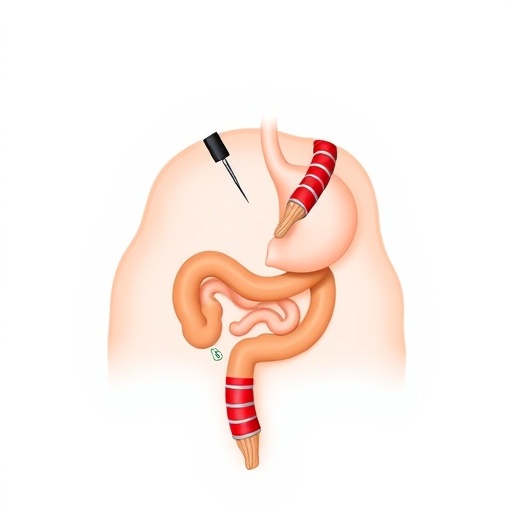PROTECT YOUR DNA WITH QUANTUM TECHNOLOGY
Orgo-Life the new way to the future Advertising by Adpathway
In the world of horse racing, the type of surface on which the horses run can significantly influence performance, safety, and horse health. Recent research conducted by Schmitt, Erbland, and Peterson has delved deeply into this crucial aspect of the sport. Their study, which employs triaxial shear tests, examines the effects of both natural and synthetic fibers in turfgrass horse racing surfaces. The findings could potentially revolutionize how racing tracks are constructed and maintained, leading to improvements in the overall experience for both horses and riders.
The research team set out with a clear objective: to analyze how different fiber compositions affect the structural integrity and performance characteristics of racing surfaces. Turfgrass, a popular choice for many racing facilities, can vary drastically depending on composition and environmental conditions. The addition of elements like synthetic fibers has gained traction, prompting the researchers to assess the interplay between these materials and their implications for horse racing.
Triaxial shear tests form the backbone of the investigative methodology employed in this research. This testing procedure is scientifically designed to measure the maximum shear resistance of soil or, in this case, the racing surface under controlled conditions. The results from these tests indicate how well a racing surface can withstand various forces, which is particularly vital during competitive races when horses exert considerable amounts of energy and force over the track. The research thus provides insights into how surfaces either support or compromise a horse’s performance.
Among the key findings is the notable impact that synthetic fibers can have on the stability of the racing surface. The study revealed that when blended with natural fibers, synthetic materials could enhance the resilience of turfgrass. This improvement is essential not only for performance optimization but also for reducing the risk of injury to horses. It suggests that the strategic incorporation of these materials could lead to a safer racing environment, which is a priority for breeders, trainers, and regulatory bodies.
Another fascinating revelation from the study is the comparative performance metrics of surfaces composed entirely of natural fibers versus those that integrate synthetic elements. According to the tests, surfaces made exclusively of natural fibers exhibited variable performance characteristics influenced by environmental factors, such as moisture content and temperature. In contrast, the synthetic-enhanced surfaces demonstrated greater consistency, thereby providing a more predictable and reliable racing experience.
The implications of these findings extend beyond performance metrics. Horse racing is often scrutinized for its impacts on animal welfare. By ensuring that racing surfaces are optimal for equine athletes, there is a potential to diminish the frequency of injuries related to surface quality. The researchers emphasize that creating an ideal racing environment goes hand in hand with treating the horses with care and respect, highlighting a more humane approach to the sport.
Moreover, this research serves as a catalyst for further studies aimed at understanding the long-term effects of synthetic vs. natural fiber compositions on turfgrass. It opens up avenues for investigation into how these surfaces interact with various weather conditions, soil types, and even the maintenance practices employed by racing facilities. Such knowledge could inform best practices for track preparation, ultimately leading to enhanced racing standards worldwide.
As discussions around sustainability and environmental impact become increasingly prevalent in sports, the findings of this research also raise questions about the ecological footprint of using synthetic materials in racing contexts. While these fibers may provide immediate benefits in terms of performance and safety, the researchers encourage thorough examination of their environmental impact over both short-term and long-term periods. Understanding the lifecycle of synthetic fibers used in racing surfaces may yield critical insights that inform future design choices, balancing performance needs with environmental responsibility.
In an era where horse racing is competing with new forms of entertainment, maintaining high standards in sports quality is essential. This research highlights that innovation in racing surfaces can play a decisive role in sustaining interest in the sport. As racing authorities consider updates to their racing tracks, they may find this study particularly influential in shaping policies around the integration of new materials that enhance both performance and safety for horse athletes.
In summary, the examination of natural and synthetic fibers in turfgrass horse racing surfaces using triaxial shear tests reveals significant insights about how racing tracks can be improved. The research underscores the delicate balance between performance, safety, and environmental considerations within horse racing. As racing associations and trainers look toward the future, this study may serve as a pivotal foundation for adapting new technologies to elevate the sport.
Finally, as racing continues to evolve, the collaboration between researchers and industry professionals will be essential. Engaging with this newfound knowledge allows stakeholders to make informed decisions that will enhance the quality of the sport we know and love. The advancements outlined in Schmitt, Erbland, and Peterson’s study could reshape the future of racing, ensuring a safer and more competitive environment for all involved.
Subject of Research: The effects of natural and synthetic fibers in turfgrass horse racing surfaces.
Article Title: Effects of natural and synthetic fibers in turfgrass horse racing surfaces as characterized by triaxial shear tests.
Article References:
Schmitt, P., Erbland, P. & Peterson, M.L. Effects of natural and synthetic fibers in turfgrass horse racing surfaces as characterized by triaxial shear tests.
Sports Eng 28, 7 (2025). https://doi.org/10.1007/s12283-025-00491-x
Image Credits: AI Generated
DOI: 10.1007/s12283-025-00491-x
Keywords: horse racing, synthetic fibers, natural fibers, turfgrass, triaxial shear tests, equine safety, racing surface performance, environmental impact.
Tags: horse health and racing surfaceshorse racing surface safetyimpact of fiber types on performanceimplications of fiber materials for racingmaintenance of horse racing tracksnatural vs synthetic fibers in racingperformance characteristics of turfgrassracing track construction improvementsstructural integrity of racing surfacestriaxial shear tests in researchturfgrass composition effectsturfgrass racing surfaces


 2 months ago
30
2 months ago
30





















 English (US) ·
English (US) ·  French (CA) ·
French (CA) ·